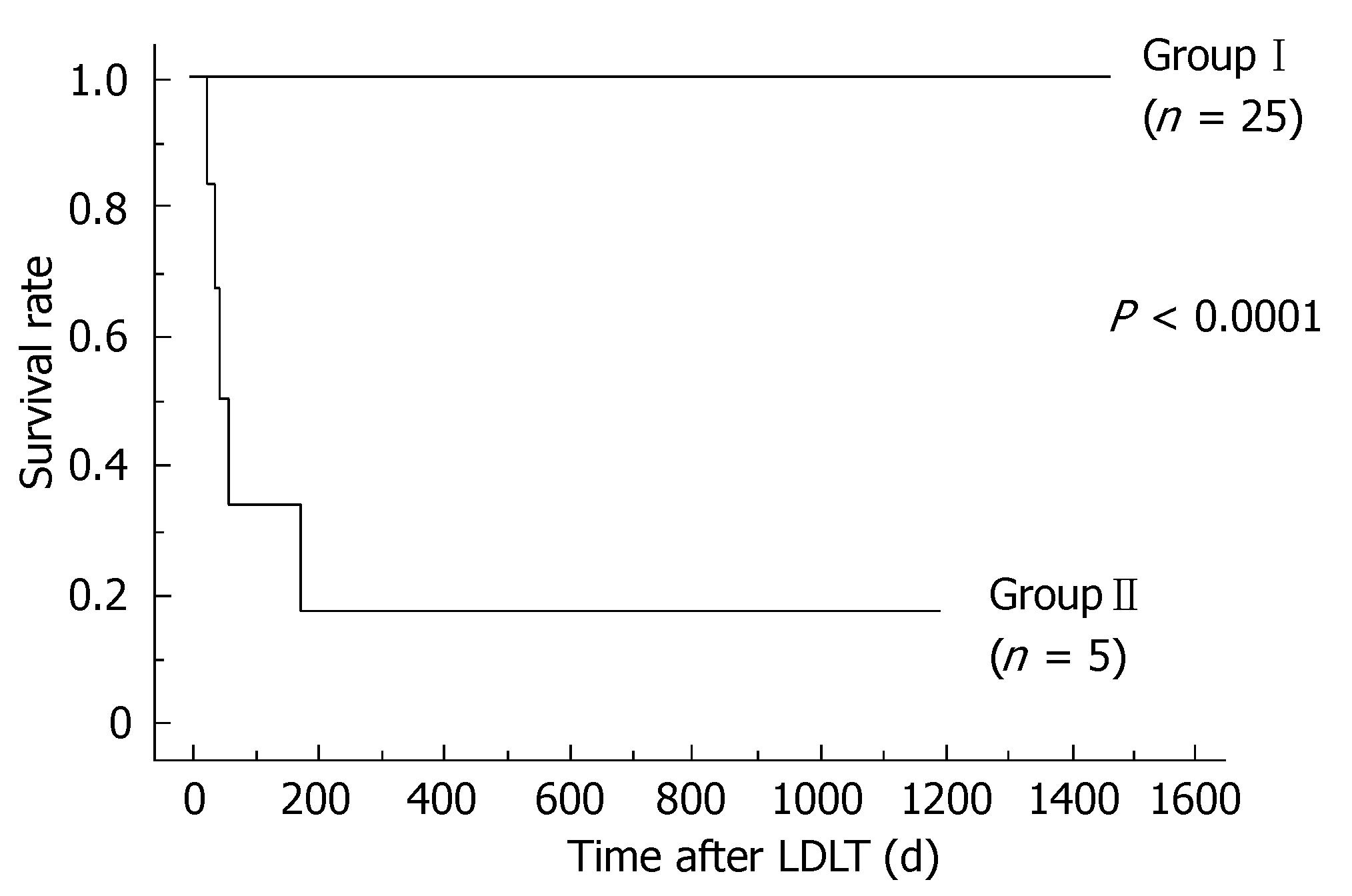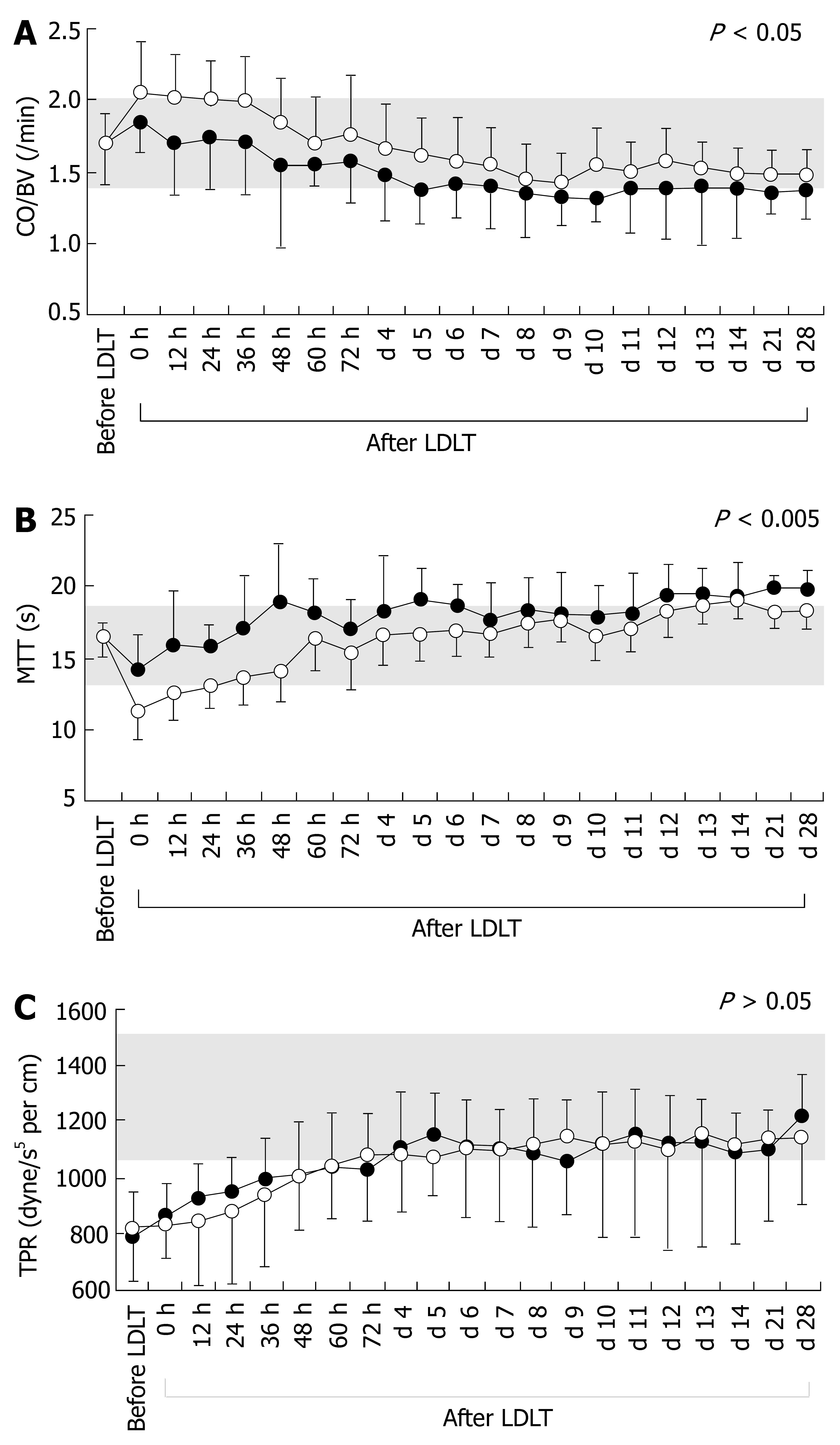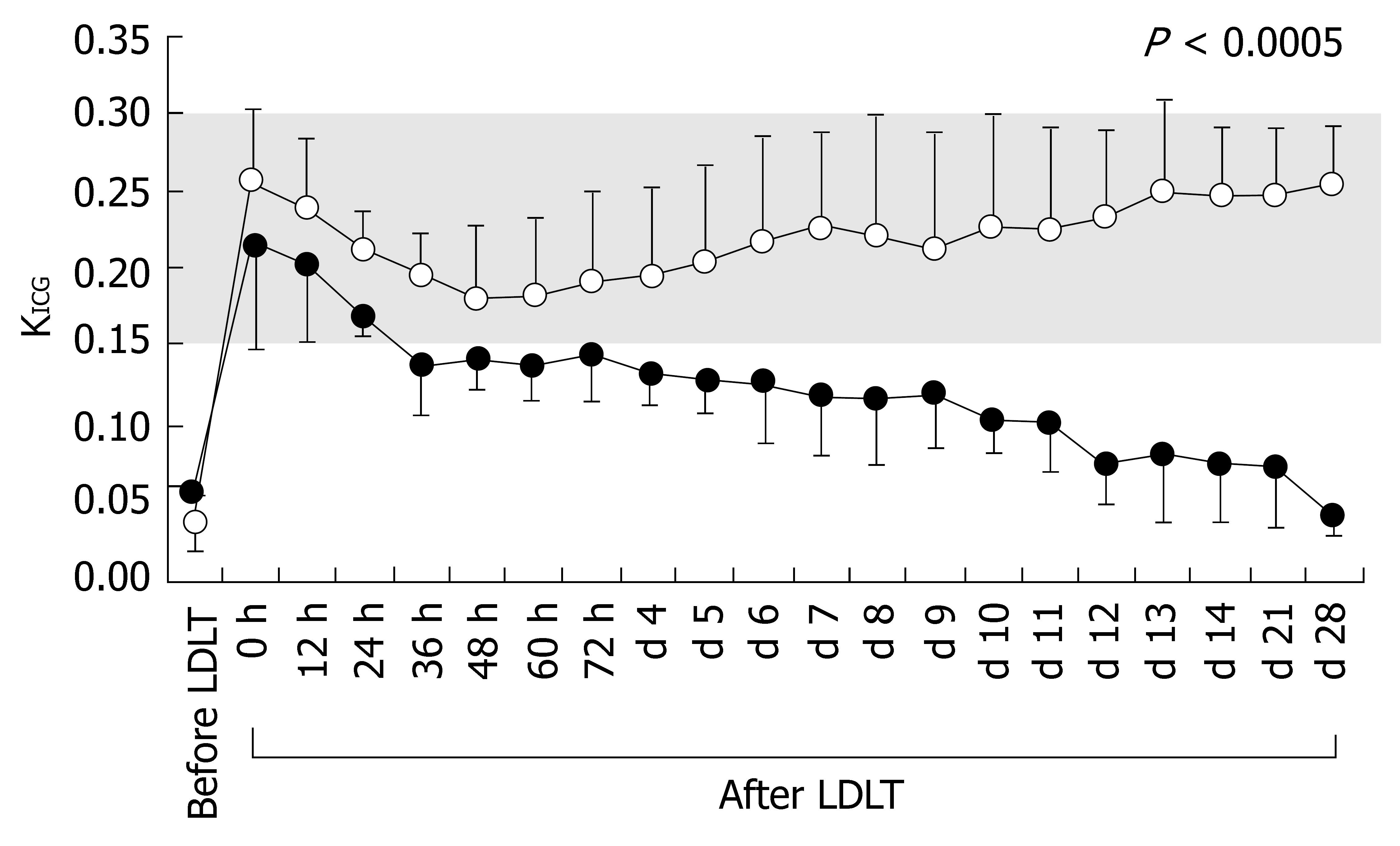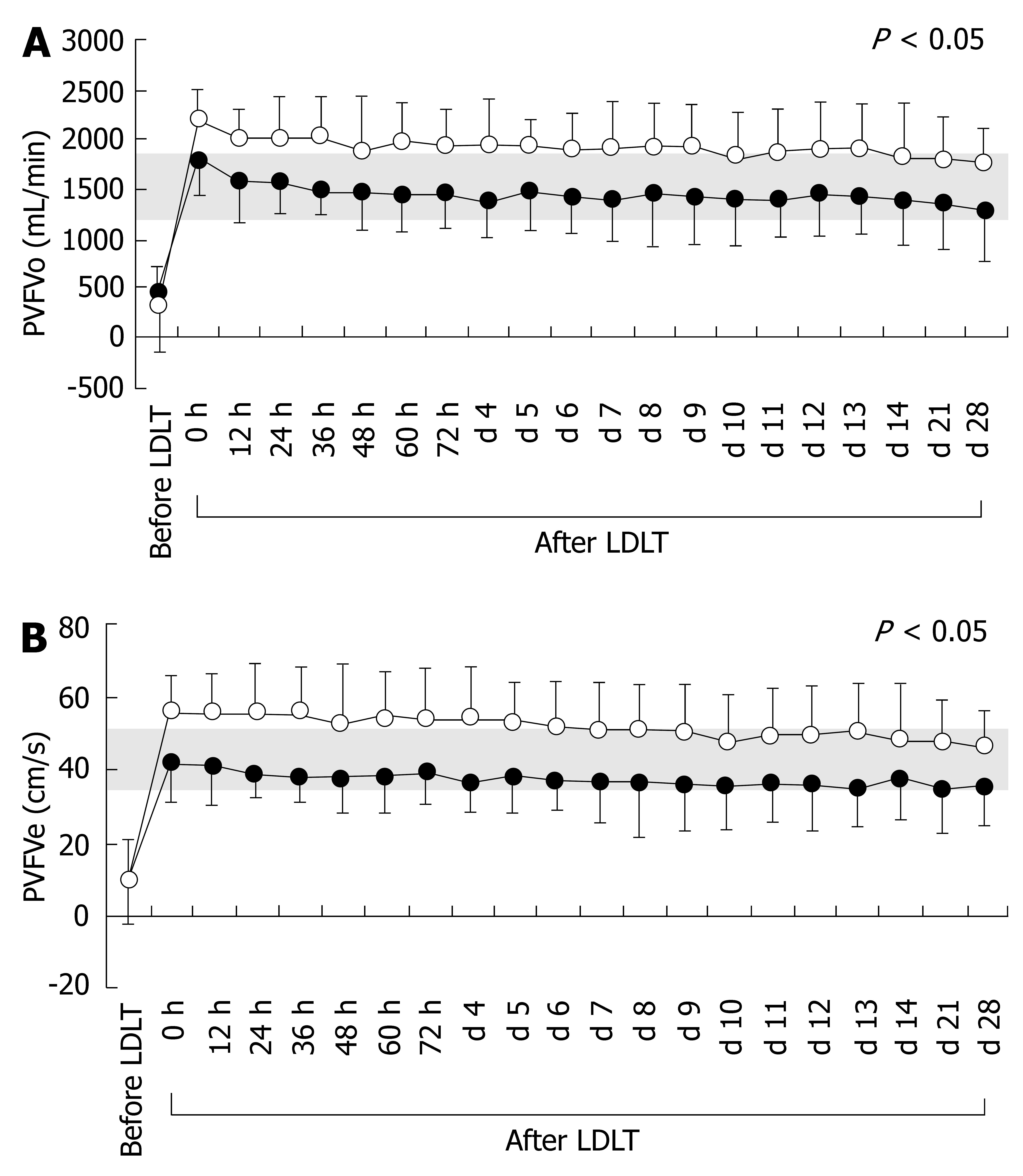Copyright
©2007 Baishideng Publishing Group Co.
World J Gastroenterol. Nov 28, 2007; 13(44): 5918-5925
Published online Nov 28, 2007. doi: 10.3748/wjg.v13.i44.5918
Published online Nov 28, 2007. doi: 10.3748/wjg.v13.i44.5918
Figure 1 Survival rates after LDLT.
The two lines represent the survival rates for Groups I and II. The P value analyzed by the log-rank test was < 0.0001.
Figure 2 Temporal changes in systemic hemodynamic parameters before and after LDLT.
A: Temporal changes in the ratio of CO to BV before and after LDLT; B: Temporal changes in MTT before and after LDLT; C: Temporal changes in TPR before and after LDLT. Open and closed circles represent systemic hemodynamic parameters for Groups I and II, respectively. Shaded areas show normal ranges measured in healthy individuals.
Figure 3 Temporal changes in KICG before and after LDLT.
Open and closed circles represent KICG values for Groups I and II, respectively. The shaded area shows the normal range measured in healthy individuals.
Figure 4 Temporal changes in splanchnic circulatory parameters before and after LDLT.
A: Temporal changes in PVFVo before and after LDLT; B: Temporal changes in PVFVe before and after LDLT. Open and closed circles represent splanchnic circulatory parameters for Groups I and II, respectively. Shaded areas show normal ranges measured in healthy individuals.
- Citation: Hori T, Yagi S, Iida T, Taniguchi K, Yamagiwa K, Yamamoto C, Hasegawa T, Yamakado K, Kato T, Saito K, Wang L, Torii M, Hori Y, Takeda K, Maruyama K, Uemoto S. Stability of cirrhotic systemic hemodynamics ensures sufficient splanchnic blood flow after living-donor liver transplantation in adult recipients with liver cirrhosis. World J Gastroenterol 2007; 13(44): 5918-5925
- URL: https://www.wjgnet.com/1007-9327/full/v13/i44/5918.htm
- DOI: https://dx.doi.org/10.3748/wjg.v13.i44.5918












